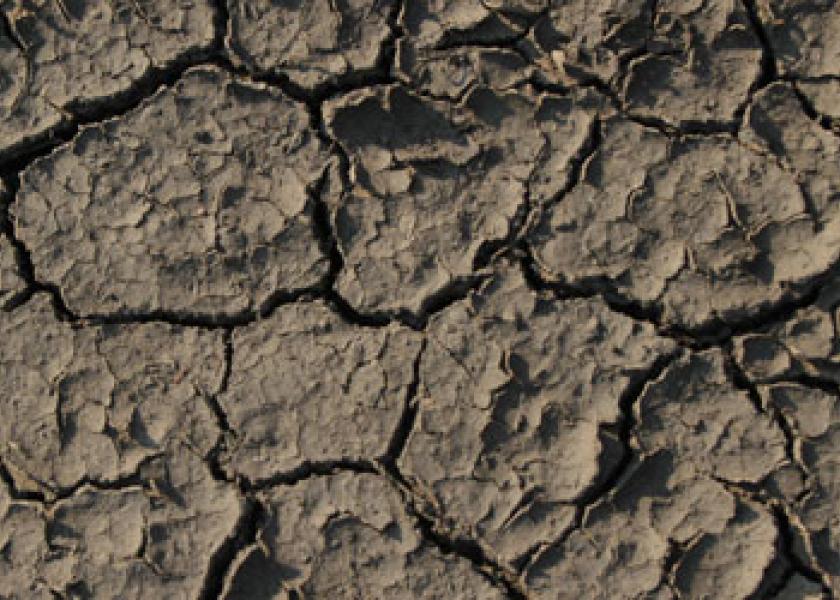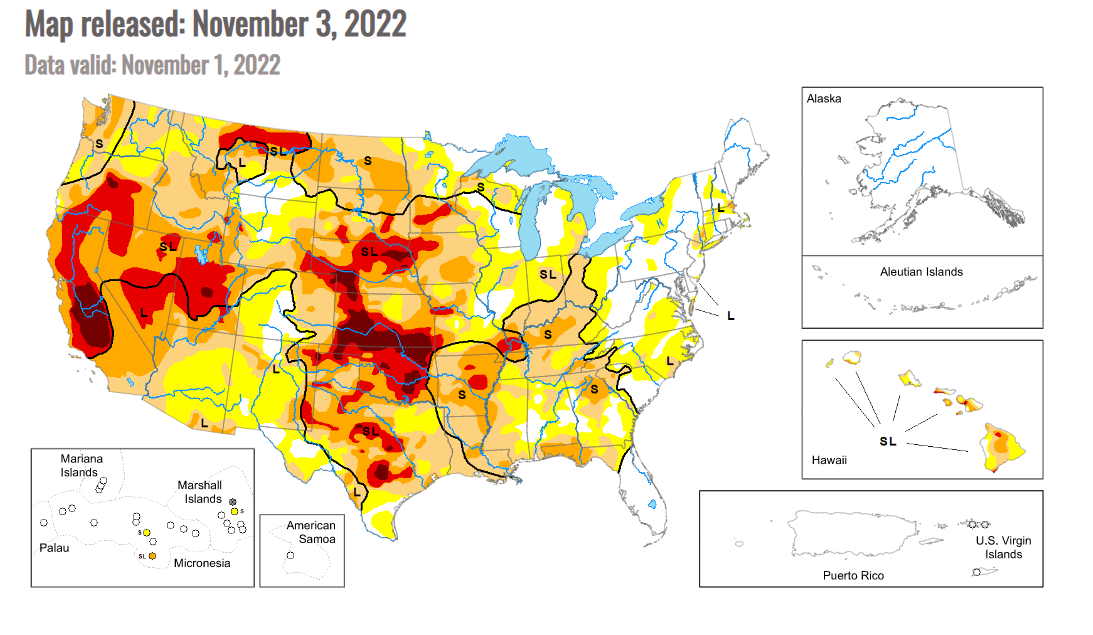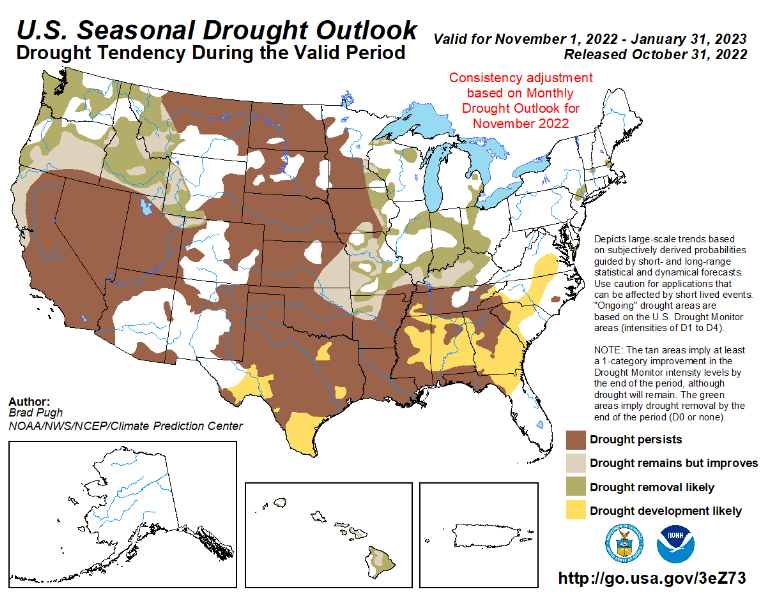Drought intensity builds in Kansas

As of Nov. 2, 85% of the U.S. was experiencing abnormal dryness/drought, according to the U.S. Drought Monitor, up one percentage point from last week. USDA estimates the drought footprint covers 74% of winter wheat acres (unchanged from last week). “Extreme” or “exceptional” drought now covers 59% of Kansas, including virtually all of the southern half of the state and many of the western counties.
In HRW areas, dryness/drought covers 83% of Colorado (up 1 point), 100% of Kansas (unchanged), 90% of Montana (unchanged), 100% of Nebraska (unchanged), 100% of Oklahoma (unchanged), 100% of South Dakota (unchanged) and 92% of Texas (down 1 point).
In SRW areas, dryness/drought covers 93% of Missouri (down 7 points), 79% of Illinois (down 11 points), 98% of Indiana (down 2 points), 86% of Ohio (up 13 points), 40% of Michigan (down 1 point), 99% of Kentucky (unchanged) and 98% of Tennessee (up 7 points).
For the Plains, the Drought Monitor noted: “Temperatures were well above normal over the northern and eastern portion of the High Plains and below normal in the west. Temperatures were 8-10 degrees above normal in the Dakotas and 2-4 degrees above normal in Nebraska and northern Kansas. Portions of Wyoming, Colorado and western Nebraska were cooler than normal with temperatures 2-4 degrees below normal. It was quite the dry week in the region as there were only a few pockets of rain in southeast South Dakota, northeast Nebraska and into north-central Kansas. Flash drought conditions are impacting the region, especially in the Dakotas where warm, dry and windy conditions have provide ideal harvest conditions but have started taking a toll on the region. In the Dakotas, a broad expansion of severe drought conditions took place this week. Moderate drought also expanded in eastern South Dakota and into southern portions of the state. Continued dryness over Kansas, where portions of southwest Kansas had their driest October on record, allowed for the expansion of extreme and exceptional drought this week. On the plains of Colorado, moderate drought and abnormally dry conditions continue to expand.”
Across the South, the Drought Monitor commentary stated: “Welcome rains over north and south Texas, Arkansas, northern Louisiana and into southern Oklahoma helped to build on recent precipitation events in some of these areas. Portions of north Texas and into southern Arkansas and northern Louisiana recorded 200-400% of normal precipitation for the week. Southern Louisiana as well as west Texas and the Oklahoma panhandle remained dry. Cooler than normal temperatures through much of Texas and Oklahoma as well as western Arkansas and Louisiana helped to slow down further drought development for this week and even allowed for some improvements. A full category improvement to drought levels was made over northern Texas and into southeast Oklahoma. In Arkansas, extreme and severe drought were improved. Extreme drought was removed from Tennessee this week with improvements in the western portion of the state while abnormally dry conditions expanded in the central and northeast portion of the state. Louisiana had some adjustments to the severe drought in the south as the western portion improved but the area expanded to the east. Additional improvements were made to moderate and severe drought in east Texas and to abnormally dry conditions in south Texas.”
In the Midwest, the Drought Monitor noted: “The Midwest had a stark contrast in precipitation for the week with the northern and western portions quite dry, the central areas quite wet, and the eastern areas dry. The greatest precipitation was recorded from central and eastern Missouri into Illinois and western Indiana where over 300% of normal precipitation was recorded. Temperatures remained mild in the region with almost all areas above normal for the week, outside of some areas of Missouri and Illinois where rains kept the temperatures below normal. Northern Minnesota had temperatures 6-8 degrees above normal while the eastern portions of the region were 2-4 degrees above normal. Missouri had the most improvements as rains over the current period as well as the last few weeks allowed for a full category of improvement in central and eastern portions of the state. Improvements were also made in portions of Illinois and Indiana where moderate drought and abnormally dry conditions improved. Degradations were made in Iowa and Minnesota where severe drought expanded over western Iowa and extreme drought expanded over southern Minnesota and northwest Iowa. Abnormally dry and moderate drought also expanded over portions of northern and eastern Minnesota as well as southeast Iowa. Continued dryness in Ohio allowed for the expansion of both moderate drought and abnormally dry conditions.”
The Seasonal Drought Outlook calls for drought to persist across most of the Southern and Central Plains through January, though some improvement is expected in southeastern Kansas and far northeastern Oklahoma. Drought conditions are likely to improve or be removed across Missouri and northern SRW wheat areas during the next three months.








